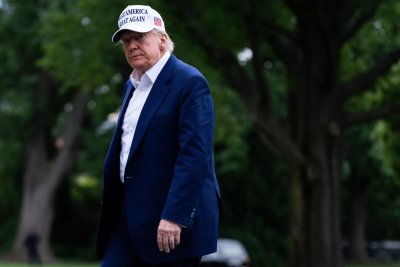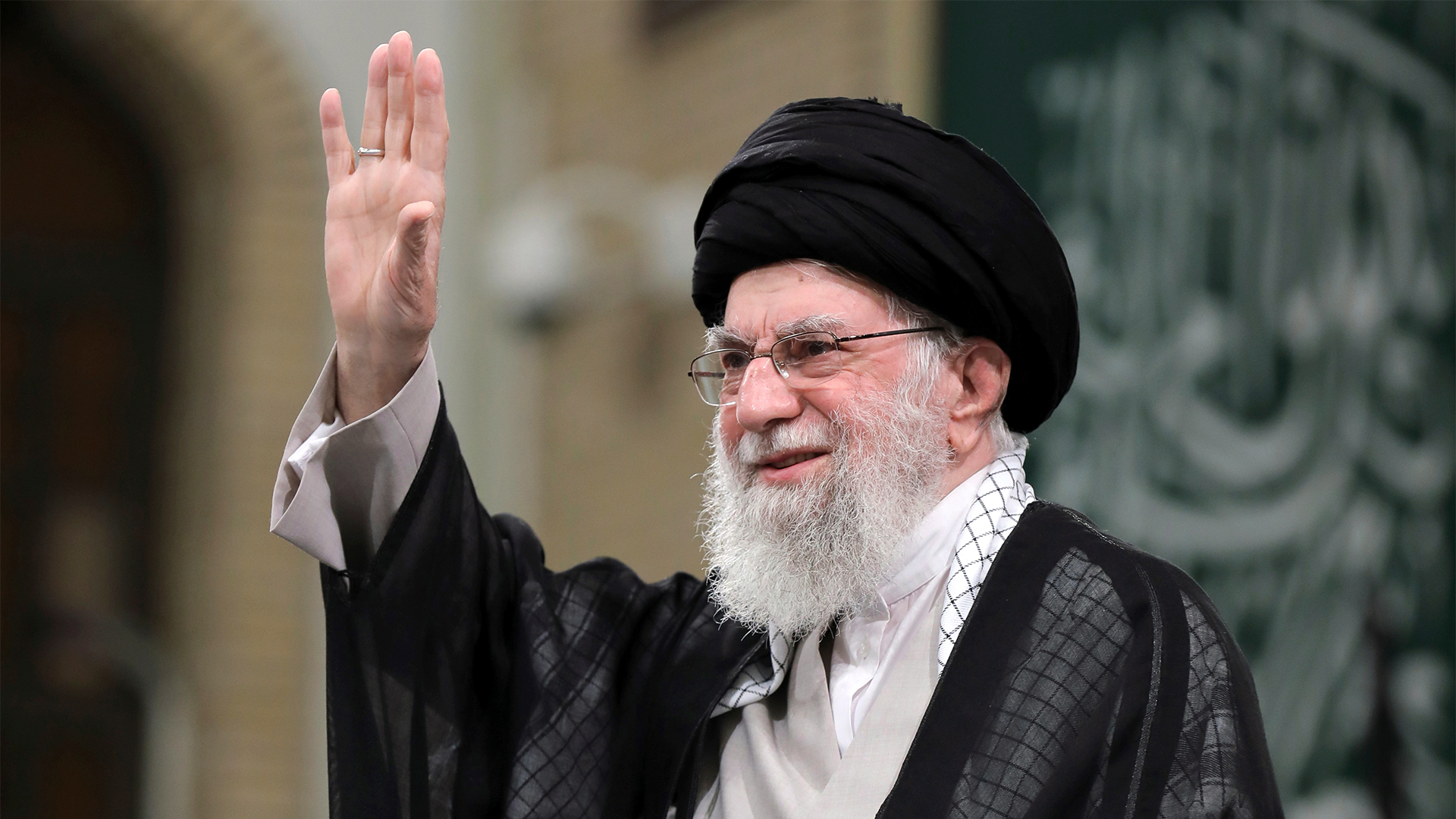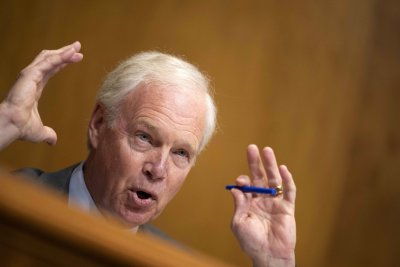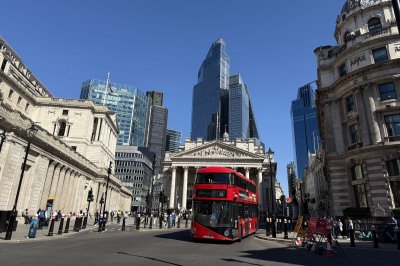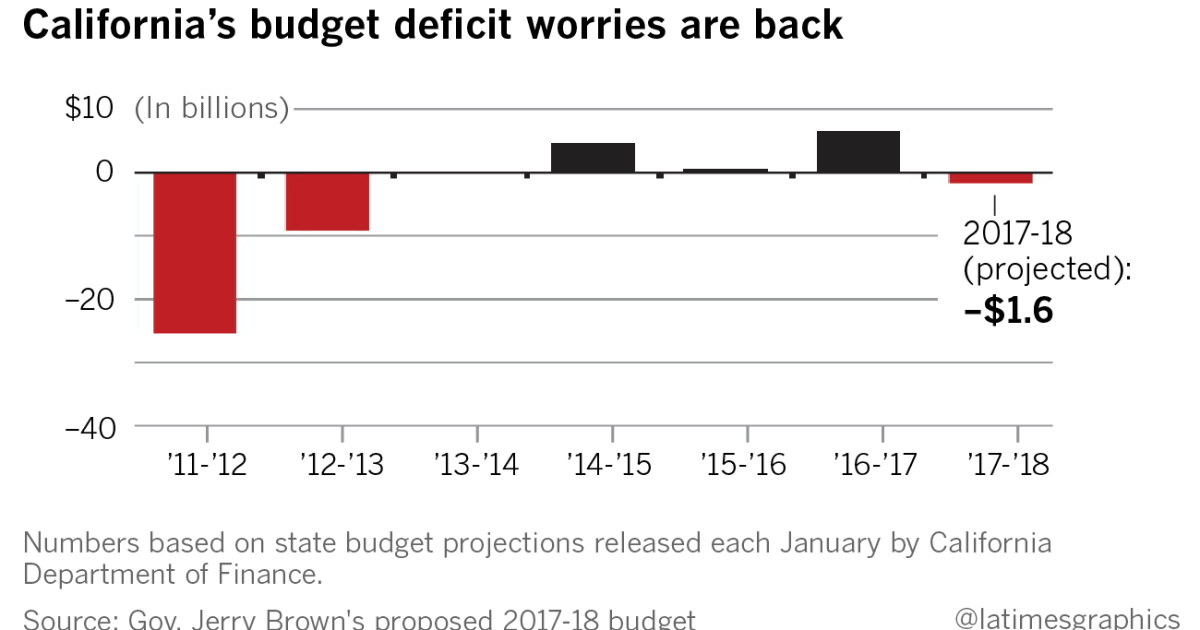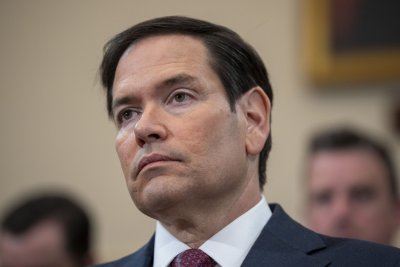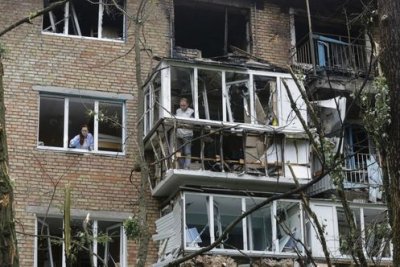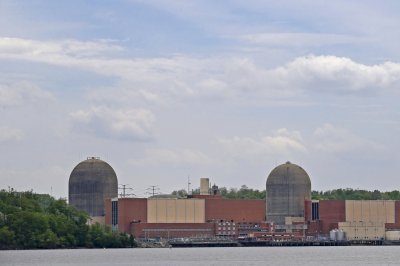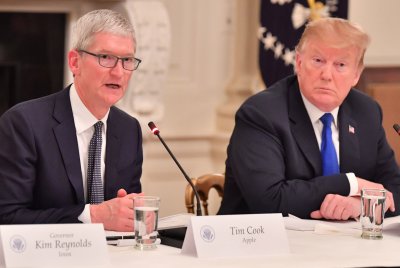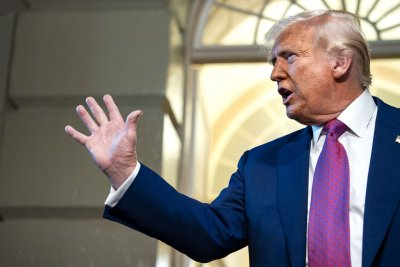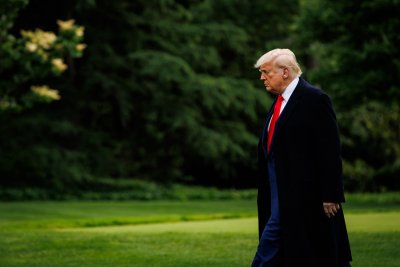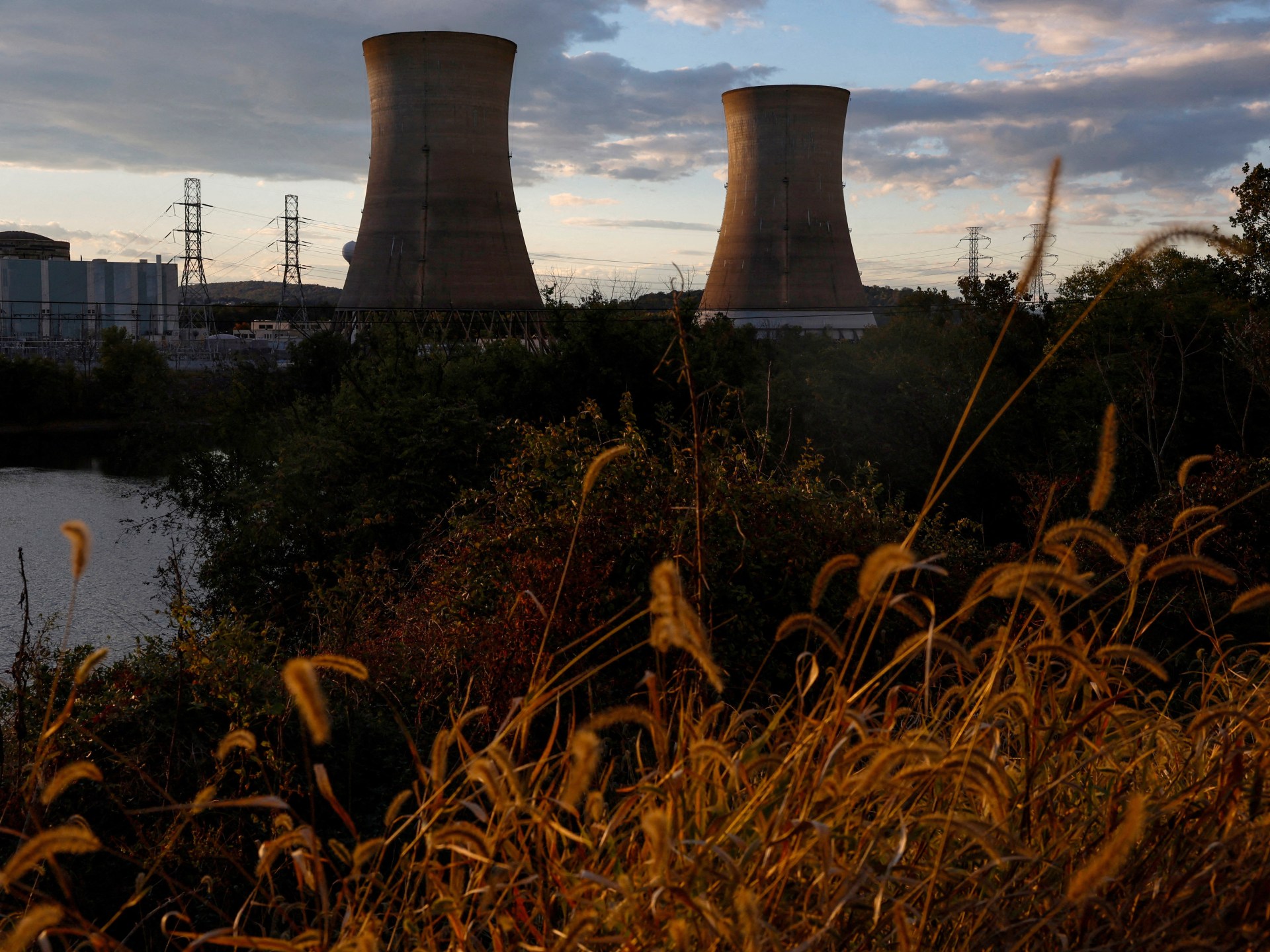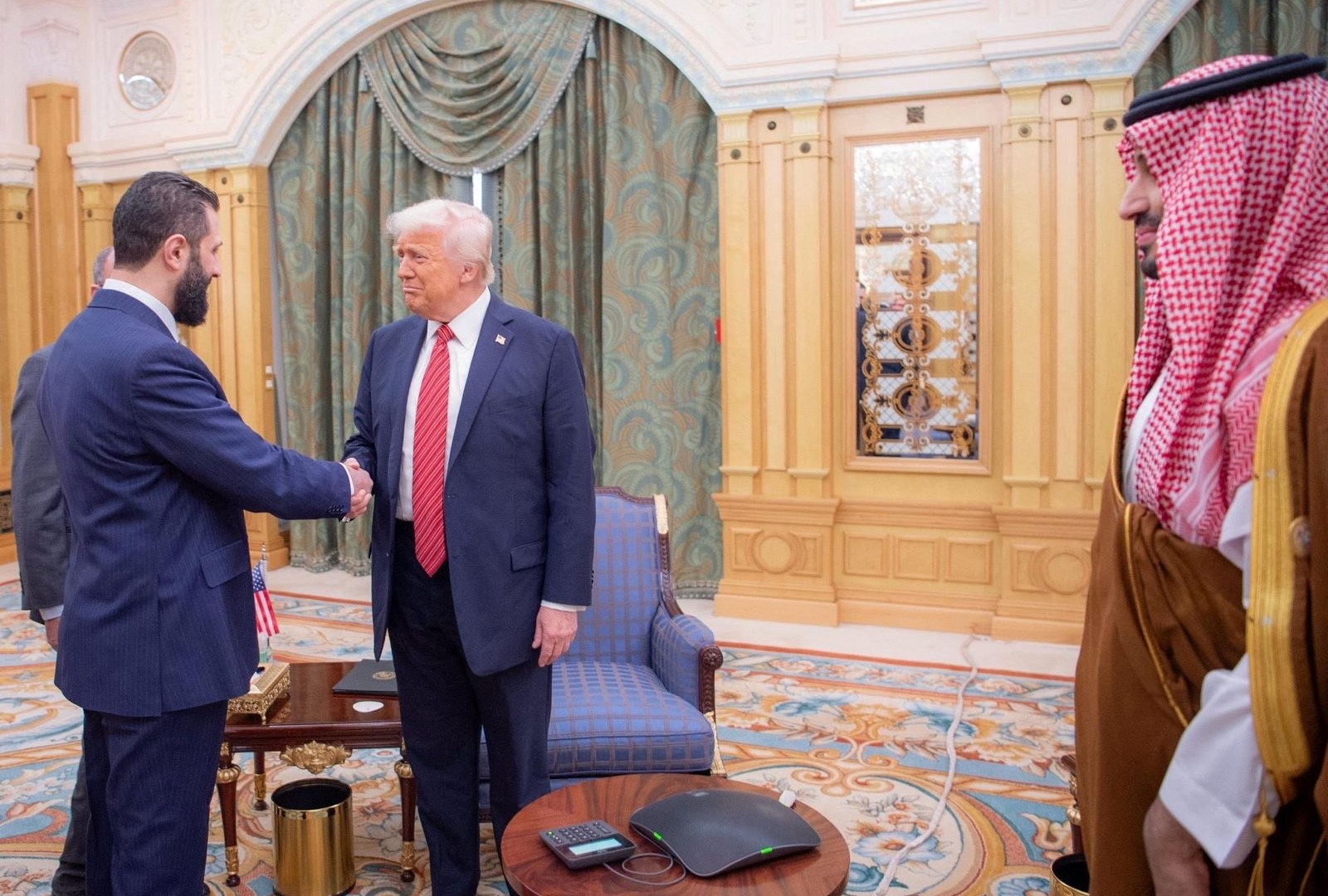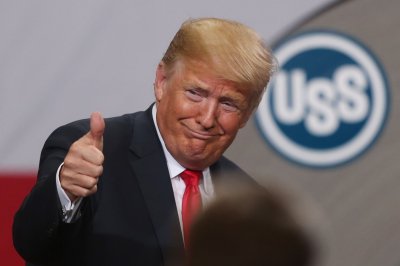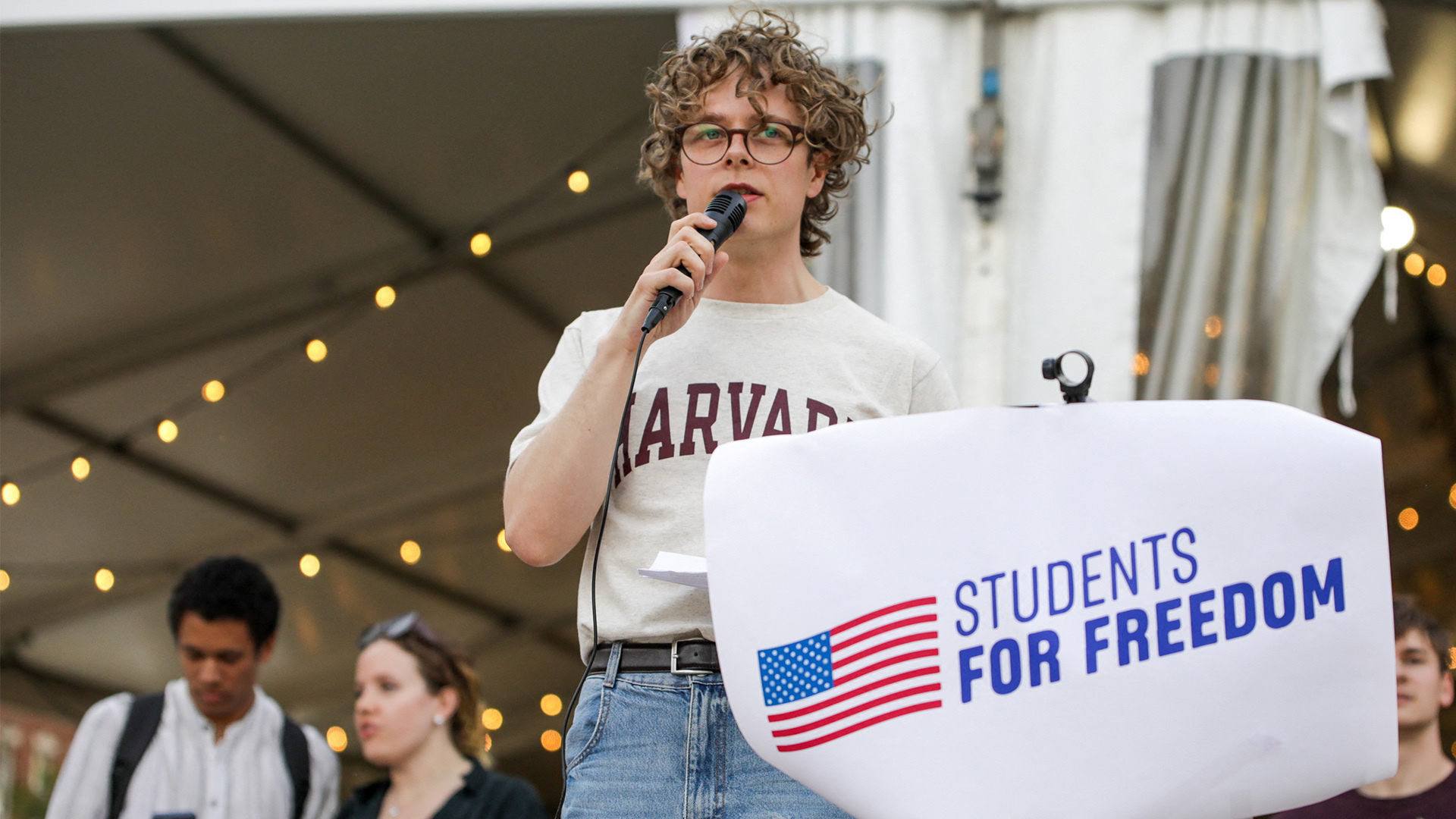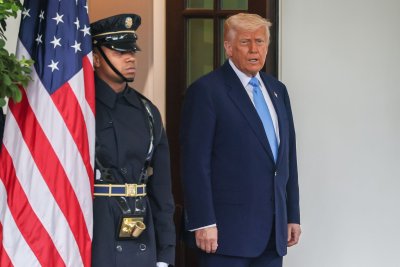Residents clear debris at residential building struck by a drone in Kyiv, Ukraine, on Saturday morning. Photo by Sergey Dolzhenko/EPA-EFE
May 24 (UPI) — Russia, using missiles and drones, launched one of the biggest assaults on the Ukrainian capital, Kyiv, since the beginning of the war more than three years ago and hours after a prisoner exchange began.
Russia was retaliating after several days of Ukrainian drone attacks inside its territory, including in Moscow.
The first explosions in Kyiv were reported at 10 p.m. Friday, according to the Kviv Independent. Another wave was heard at around 1 a.m. and then, hours later, more missile debris was reported in the Obolonskyi district
CNN reported that 13 people died in the drone and missile attacks — at least four in the eastern Donetsk region, five in the southern Kherson and Odesa regions, and four in the northern Kharkiv region in the past 24 hours.
At least 15 people needed medical attention in Kyiv, including two children, the network reported.
Russia launched 14 ballistic missiles and 250 drones, with Ukrainian forces shooting down six missiles and stopping 245 drones before they reached Kyiv. Projectiles also hit the Dnipro, Odesa, Kharkiv, Donetsk and Zaporizhzhia regions.
Ukrainian President Volodymyr Zelensky reacted angrily after the attack and posted video with his message on X.
“It was a difficult night for all of Ukraine — 250 strike drones, the absolute majority of them Iranian ‘Shaheds,’ and 14 ballistic missiles,” Zelenskyy wrote. “The Odesa, Vinnytsia, Sumy, Kharkiv, Donetsk, Kyiv, Dnipro regions suffered damages. All strikes targeted civilians. There are fatalities. My condolences to the families and loved ones.”
Zelensky called for more sanctions on Russia to achieve a cease-fire, including one lasting 30 days.
“With each such attack, the world becomes more certain that the cause of prolonging the war lies in Moscow,” Zelensky wrote.
“Ukraine has proposed a ceasefire many times — both a full one and one in the skies. It all has been ignored. It is clear that far stronger pressure must be imposed on Russia to get results and launch real diplomacy.
“We are awaiting sanctions steps from the United States, Europe, and all our partners. Only additional sanctions targeting key sectors of the Russian economy will force Moscow to cease fire.”
Amid explosions and loud sirens throughout Kyiv, people took shelter in the city’s subway stations as the air raid alert in lasted more than seven hours
A five-story building in the Solomianskyi district caught fire, and seven people needed medical attention, said Tymur Tkachenko, head of the Kyiv city military administration.
“It’s terrorism,” said Mykyta Kruchan, a 22-year-old business development manager whose parents live in an apartment building in the Obolonskyi district hit by a Russian Shahed-type drone. Their apartment was not damaged, he told the Independent.
“What Ukraine does we shoot their military buildings, military stuff, centers. … But here, it’s not an adequate reply to me. All they do is on purpose.”
Kruchan, who described himself as once a supporter of President Donald Trump, said the president wants to “team up with terrorists rather than stop them.”
Olha Chyrukha, a 64-year-old resident of Kyiv, standing outside a damaged apartment building, said: “I wish they’d agree to a cease-fire. To bomb people like this …”
Ukrainian parliament member Kira Rudik told CNN hiding “under the stairs” overnight in Kyiv.
“It was terrifying, it felt honestly like armageddon, the explosions were everywhere,” she said.
Russia’s defense ministry claimed 94 Ukrainian unmanned aerial vehicles over Russian territory were destroyed, mostly over the Belgorod and Bryansk regions. Also, some UAVs were shot down over the Kursk, Lipetsk, Voronezh and Tula regions.
Prisoner swap, cease-fire talks
Russia and Ukraine began a one-for-one 1,000 prisoner exchange of soldiers and civilians in the first phase of a deal agreed to in Istanbul, Turkey, this week.
In the first swap on Friday, 390 Ukrainians were back home, and on Saturday the Russian defense ministry said 307 prisoners from each country were exchanged.
The two sides, with help from the United States, have been working toward a permanent cease-fire.
Ukrainian Foreign Minister Andrii Sybiha said “one week has passed since the Istanbul meeting, and Russia has yet to send its ‘peace memorandum.’ Instead, Russia sends deadly drones and missiles at civilians.”
Ukraine and its allies want an immediate and unconditional cease-fire.
Russian Foreign Minister Sergei Lavrov said his nation would give Ukraine a draft text stating its conditions for a truce after the prisoner swap is completed.
Last week, Russian President Vladimir Putin didn’t show up for a meeting with Zelensky in Turkey. Instead, lower-level officials negotiated.
